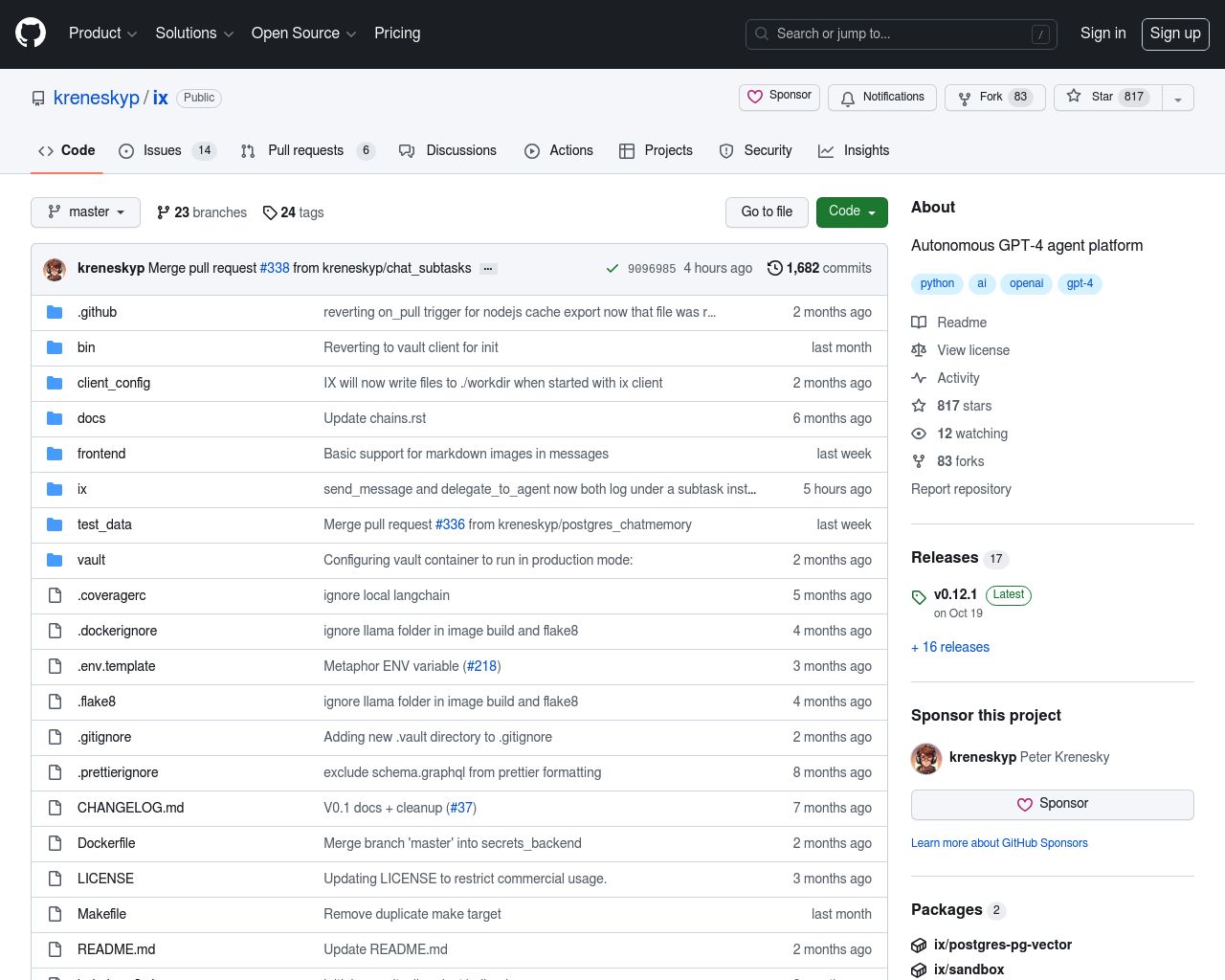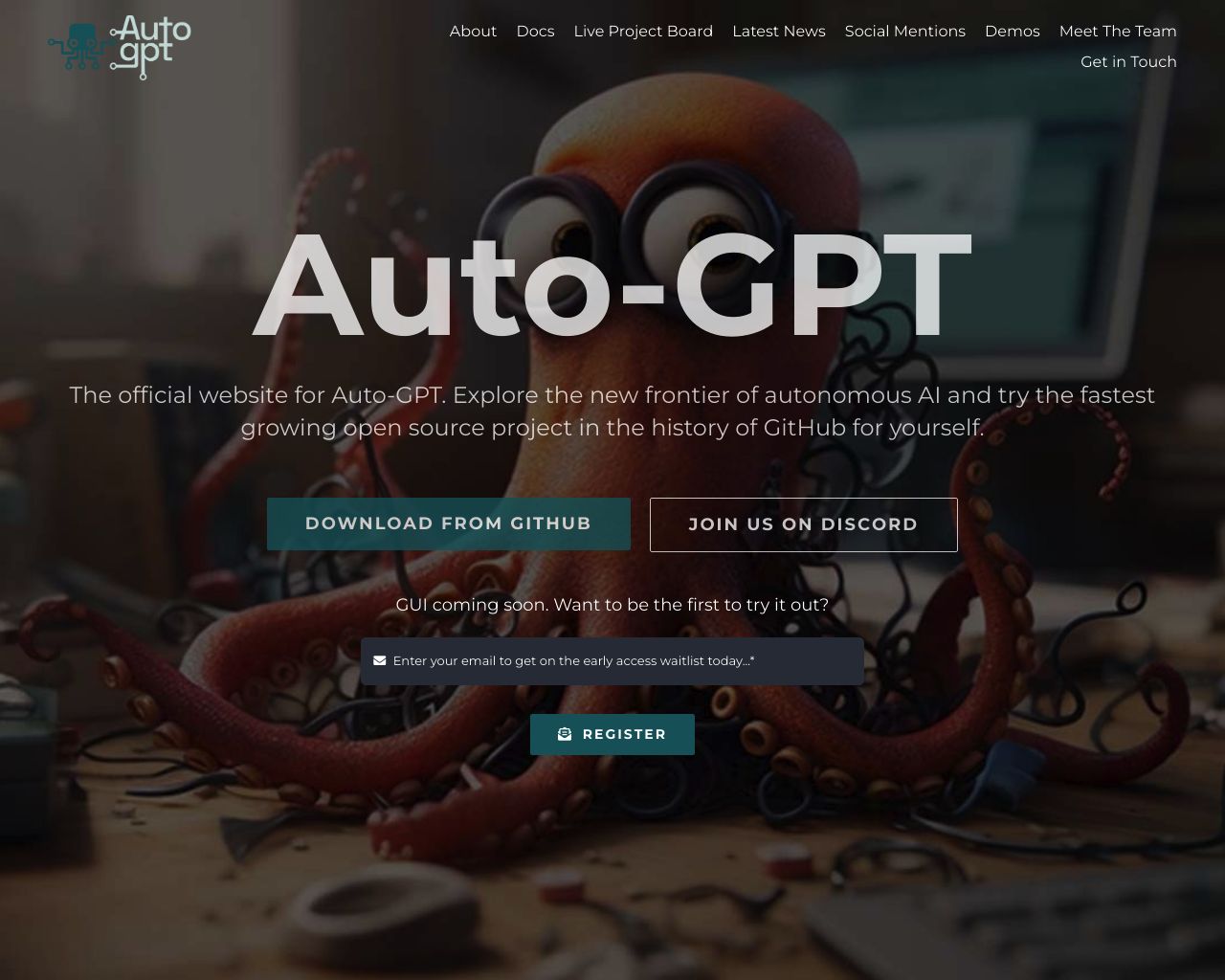Introduction to IX and AutoGPT: Harnessing the Power of AI
AI agent platforms revolutionize how businesses and developers harness artificial intelligence. This comparison delves into Agent iX and AutoGPT, two innovative solutions reshaping the AI landscape. Agent iX offers a visual, no-code approach to building collaborative AI agents, while AutoGPT pushes the boundaries of autonomous task execution. We’ll explore their unique features, strengths, and limitations, guiding you through the intricacies of each platform. Whether you’re a developer seeking powerful APIs, a business leader focused on scalability, or an AI enthusiast eager to experiment, this analysis will equip you with the knowledge to choose the right AI agent solution for your needs. We’ll also introduce SmythOS, a comprehensive platform that addresses key limitations and offers advanced features for enterprise-grade AI deployment.
Agent iX Overview
Agent iX revolutionizes AI development with its open-source platform for creating and managing autonomous AI agents. The system empowers developers to build sophisticated, task-specific agents using a visual, no-code editor. This innovative approach democratizes AI creation, allowing users to construct complex workflows by connecting nodes in a graph-based interface.
Agent iX revolutionizes AI development with its open-source platform for creating and managing autonomous AI agents… using a visual, no-code editor.


Agent iX excels in multi-agent collaboration, enabling teams of AI agents to work together on complex tasks. The platform supports various AI models, including OpenAI, Google PaLM, Anthropic, and Llama, providing flexibility in agent capabilities. Agent iX’s scalable architecture allows for parallel execution of multiple agents, making it suitable for handling large-scale, diverse workloads.
Agent iX excels in multi-agent collaboration, enabling teams of AI agents to work together on complex tasks.
The platform’s strengths lie in its visual builder, which simplifies agent creation and testing. Users can rapidly prototype and deploy agents for tasks ranging from QA chatbots to code generation and data analysis. The embedded chat feature in the editor facilitates quick debugging and iteration. However, the platform’s documentation lacks details on specific features like memory management, explainability, and data encryption, which may be crucial for enterprise users.
The platform’s strengths lie in its visual builder, which simplifies agent creation and testing.
Agent iX integrates well with existing systems through API support, allowing custom agents to be deployed and accessed programmatically. While the platform offers robust development and production environments, it doesn’t explicitly mention features like staging domains or deployment as webhooks, which could limit certain deployment scenarios. The system’s scalability and support for OAuth authentication demonstrate its potential for enterprise-grade applications, though more information on security features would be beneficial for potential users in sensitive industries.
AutoGPT Overview
AutoGPT pioneers autonomous AI agents capable of executing complex tasks with minimal human intervention. Leveraging OpenAI’s GPT-4, this open-source platform empowers developers to create AI agents that can self-prompt, break down tasks, and utilize internet resources to achieve predefined goals.
AutoGPT’s agents excel in diverse applications, from software development to content creation. The platform’s standout feature is its ability to manage long-term tasks independently, automating workflows by dissecting large projects into manageable sub-tasks. This autonomous capability sets AutoGPT apart from traditional AI models that require constant human prompting.
AutoGPT pioneers autonomous AI agents capable of executing complex tasks with minimal human intervention… empowers developers to create AI agents that can self-prompt, break down tasks, and utilize internet resources to achieve predefined goals.
AutoGPT equips its agents with advanced functionalities, including code debugging, file management, and multimodal input processing. These features enable the creation of specialized AI assistants like ChefGPT for recipe generation. However, users should be aware of potential limitations such as error susceptibility due to self-feedback loops and the absence of long-term memory.


While AutoGPT showcases impressive autonomous decision-making capabilities, it faces challenges in maintaining context over extended periods and can sometimes struggle with infinite loops. The platform’s recursive nature also contributes to higher operational costs. Despite these hurdles, AutoGPT’s vision of advancing towards artificial general intelligence (AGI) positions it as a significant player in the AI development landscape.
AutoGPT’s open-source nature fosters a collaborative environment for innovation, attracting attention from the tech community and investors alike. As the platform continues to evolve, it offers a glimpse into the future of AI agents, highlighting both the immense potential and the ongoing challenges in achieving true AGI.
Feature Comparison
Agent iX and AutoGPT offer distinct approaches to AI agent development, each with unique strengths and limitations. Agent iX excels in visual building and multi-agent collaboration, providing a no-code editor that simplifies agent creation. Its graph-based interface allows users to construct complex workflows by connecting nodes, making it accessible to developers of varying skill levels. AutoGPT, on the other hand, focuses on autonomous task execution, leveraging GPT-4 to create agents capable of self-prompting and breaking down complex goals into manageable sub-tasks.
In terms of core components, Agent iX provides robust support for multiple AI models and parallel agent execution, enhancing scalability for large-scale operations. However, it lacks specific features for memory management and explainability. AutoGPT shines in its ability to manage long-term tasks independently and utilize internet resources, but faces challenges with maintaining context over extended periods and potential infinite loops.
Regarding security, both platforms have gaps. Agent iX supports OAuth authentication but lacks detailed information on data encryption and IP control. AutoGPT’s open-source nature allows for community-driven security improvements, but also exposes potential vulnerabilities. SmythOS outperforms both in this area, offering comprehensive security features including data encryption, OAuth integration, and IP control, ensuring a more secure environment for AI agent deployment and management.
Feature Comparison Table
| Agent iX | AutoGPT | SmythOS | |
|---|---|---|---|
| CORE FEATURES | |||
| Hosted Agents (Dev, Production) | ✅ | ❌ | ✅ |
| Memory & Context | ❌ | ✅ | ✅ |
| Explainability & Transparency | ❌ | ❌ | ✅ |
| Audit Logs for Analytics | ❌ | ❌ | ✅ |
| Agent Work Scheduler | ✅ | ❌ | ✅ |
| SECURITY | |||
| Constrained Alignment | ❌ | ❌ | ✅ |
| IP Control | ✅ | ❌ | ✅ |
| COMPONENTS | |||
| Data Lakes | ❌ | ❌ | ✅ |
| DEPLOYMENT OPTIONS (EMBODIMENTS) | |||
| Staging Domains | ❌ | ❌ | ✅ |
| Production Domains | ✅ | ❌ | ✅ |
| Deploy as Scheduled Agent | ❌ | ❌ | ✅ |
| DATA LAKE SUPPORT | |||
| Hosted Vector Database | ✅ | ❌ | ✅ |
| Sitemap Crawler | ❌ | ❌ | ✅ |
| YouTube Transcript Crawler | ❌ | ❌ | ✅ |
Best Alternative to Agent iX and AutoGPT
SmythOS stands out as the superior alternative to Agent iX and AutoGPT, offering a comprehensive AI automation platform that combines ease of use with powerful features. Our drag-and-drop interface enables users to create sophisticated AI agents without extensive coding knowledge, making advanced AI development accessible to a wider audience.
Unlike Agent iX and AutoGPT, SmythOS provides a complete ecosystem for AI agent development and deployment. We offer hosted environments for both development and production, ensuring seamless scalability as your needs grow. Our platform supports multi-agent collaboration, allowing teams of AI agents to work together on complex tasks, a capability not fully realized in Agent iX or AutoGPT.
SmythOS provides a complete ecosystem for AI agent development and deployment… ensuring seamless scalability as your needs grow.
SmythOS excels in memory management and context retention, addressing limitations found in both Agent iX and AutoGPT. Our agents maintain short-term and long-term memory, enabling more coherent and context-aware interactions. This feature, combined with our advanced debugging tools and explainability features, provides unparalleled transparency and control over AI agent behavior.
Security is a top priority for SmythOS. We implement robust data encryption, OAuth integration, and IP control measures, offering a level of protection that surpasses both Agent iX and AutoGPT. Our platform also includes audit logs and analytics, allowing you to track and optimize agent performance over time.
With SmythOS, you’re not limited to a single deployment option. We support deployment as APIs, webhooks, scheduled agents, and even as ChatGPT plugins. This versatility, combined with our extensive integration capabilities, allows you to seamlessly incorporate AI agents into your existing workflows and systems, making SmythOS the ideal choice for businesses seeking a powerful, flexible, and user-friendly AI automation solution.
Conclusion
Agent iX and AutoGPT showcase innovative approaches to AI agent development, each with distinct strengths. Agent iX excels in visual building and multi-agent collaboration, while AutoGPT focuses on autonomous task execution. However, SmythOS emerges as the superior choice, offering a comprehensive suite of features that address the limitations of both platforms.
SmythOS combines the best of both worlds, providing a user-friendly visual builder for creating complex AI workflows and supporting autonomous agents capable of handling long-term tasks. Unlike Agent iX and AutoGPT, SmythOS offers robust memory management, explainability features, and advanced security measures, including data encryption and IP control. These features make it particularly suitable for enterprise-grade applications and sensitive industries.
The platform’s versatility shines through its extensive integration ecosystem, supporting over 300,000 integrations and compatibility with various AI models. This flexibility, coupled with SmythOS’s ’Create Once, Deploy Anywhere’ approach, allows users to seamlessly integrate AI agents into their existing workflows and deploy them across multiple channels.
For those looking to harness the power of AI agents without compromising on security, scalability, or ease of use, SmythOS stands out as the clear winner. We invite you to explore our diverse range of AI-powered agent templates and experience the future of AI automation. Create a free SmythOS account today and join the AI revolution, backed by our 30-day money-back guarantee.
Last updated:
Disclaimer: The information presented in this article is for general informational purposes only and is provided as is. While we strive to keep the content up-to-date and accurate, we make no representations or warranties of any kind, express or implied, about the completeness, accuracy, reliability, suitability, or availability of the information contained in this article.
Any reliance you place on such information is strictly at your own risk. We reserve the right to make additions, deletions, or modifications to the contents of this article at any time without prior notice.
In no event will we be liable for any loss or damage including without limitation, indirect or consequential loss or damage, or any loss or damage whatsoever arising from loss of data, profits, or any other loss not specified herein arising out of, or in connection with, the use of this article.
Despite our best efforts, this article may contain oversights, errors, or omissions. If you notice any inaccuracies or have concerns about the content, please report them through our content feedback form. Your input helps us maintain the quality and reliability of our information.
